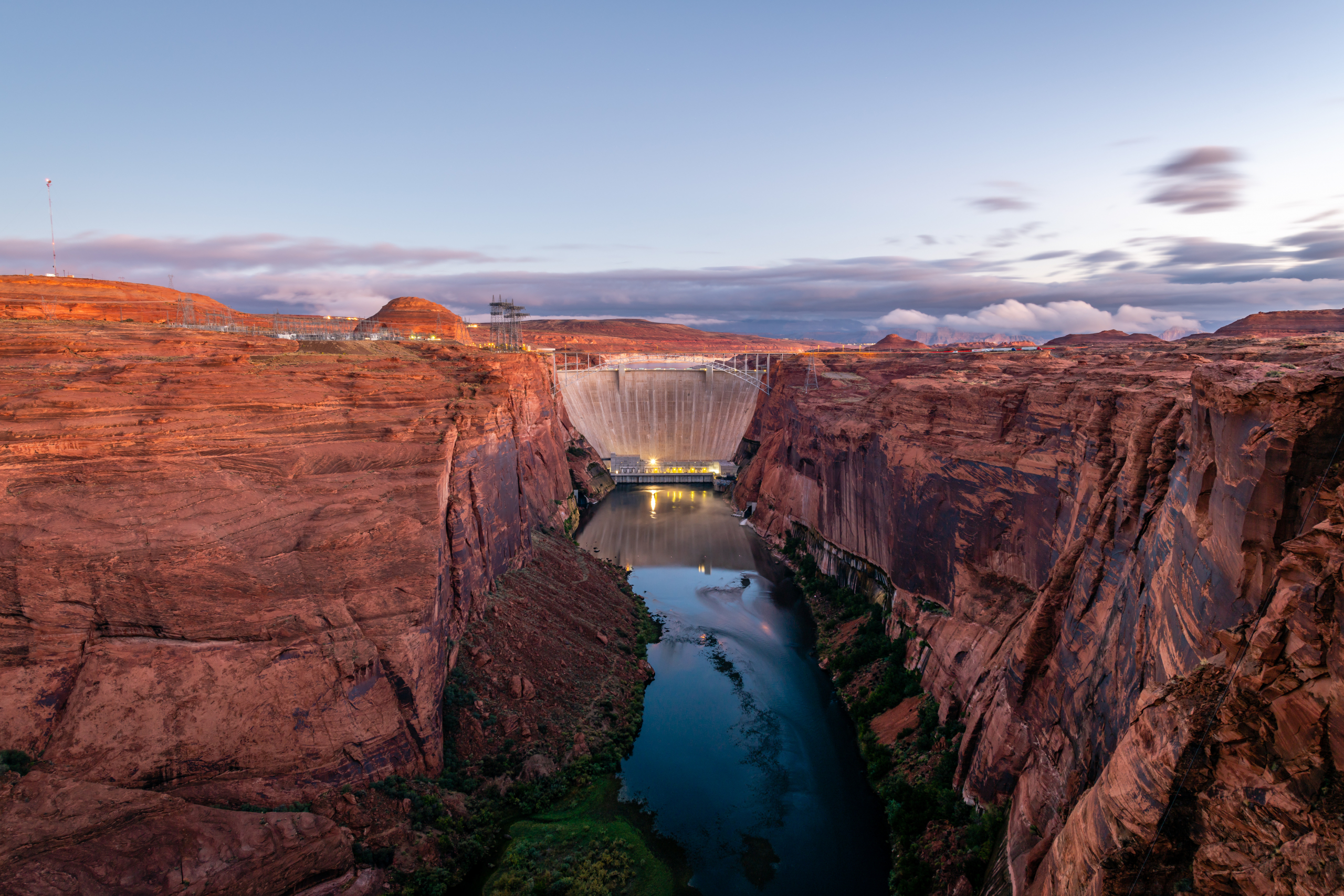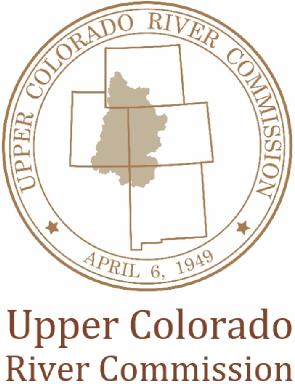Demand Management Storage Agreement (DMSA)
The DMSA authorizes the storage of up to 500,000 acre-feet of water in the Colorado River Storage Project Act (CRSPA) Initial Units if and when a Demand Management program is created in the Upper Basin. The DMSA does not require that a Demand Management program be established. Rather, it provides the legal mechanism to store water conserved under a Demand Management program if, and only if, the Upper Division States and the Upper Colorado River Commission (UCRC) agree to the feasibility and requirements of such a program. They must also consult with the Lower Division States and reach an agreement with the Secretary of the Interior on specific operations.

SEQUENCE OF THE DMSA…
The DMSA sets forth a set of sequential steps for considering and approving any Demand Management program. Currently, the Upper Division States and UCRC are engaged in the DM investigation to determine whether or not a demand management program is feasible in the Upper Basin.
If a program is determined to be feasible, there are additional steps that must be undertaken before the implementation of an Upper Basin Demand Management program. A brief explanation of each step follows:

Pursuant to the DMSA, the Upper Division States must first investigate the feasibility of developing and implementing a potential Demand Management program, and must reach consensus on the following items, among other things not specifically delineated in the DMSA, before moving to the next stage of developing a program:
- Verification of and accounting for the actual volume of conserved consumptive use;
- Conveyance of the conserved consumptive use to appropriate destinations, and accounting for associated conveyance losses;
- Providing for storage at and release from the Colorado River Storage Project Act Initial Units of any conserved consumptive use;
- Administration of an Upper Basin Demand Management program;
- Funding of an Upper Basin Demand Management program; and
- Compliance with federal and state laws within each Upper Division State;
States are currently in the Feasibility analysis stage, and the UCRC is investigating feasibility issues through this RFP.
If the Upper Division States agree that an Upper Basin Demand Management program is feasible, noting all requisite elements of feasibility, they then may develop the framework for a Demand Management program, which must include the following requirements, at a minimum:
- Water conserved will only be recognized as part of a Demand Management program if:
- The source of conserved water is Upper Colorado River System water or imported water
- The water is conserved, stored, and released for the specific purpose of helping the Upper Division States assure continued compliance with Article III of the Colorado River Compact
- If Upper Colorado River System water (as opposed to imported water) is stored, the water must have been beneficially and consumptively used under valid water rights prior to being conserved as part of an Upper Basin Demand Management program
- If Upper Colorado River System water (as opposed to imported water) is stored , the water must have been physically available for diversion in the year it was conserved, and would have been beneficially and consumptively used within a state or states of the Upper Division but for the conservation for the benefit of an Upper Basin Demand Management program; and
- The conserved or imported water has arrived at a CRSPA Initial Unit after accounting for any conveyance and associated losses.
- Any conserved or imported water to be stored in a CRSPA Initial Unit for the purposes of an Upper Basin Demand Management program shall be subject to:
- Assessment of its proportionate share of evaporation during storage;
- Available unfilled storage capacity;
- An annual creation limitation at the CRSPA Initial Units combined. This volumetric limit is to be determined as part of the feasibility investigation;
- A maximum combined storage limitation of 500,000 acre-feet at the CRSPA Initial Units;
- Reduction, in any year in which water flows over or through the spillway at Glen Canyon Dam, by the amount of that flow on an acre-foot for acre-foot basis up to the full amount of water stored under an Upper Basin Demand Management program; and
- Annual verification by the Upper Division States, through the Commission, and the Secretary of Interior, of the volume of conserved water created, conveyed, and stored at the CRSPA Initial Units.
- Any conserved water stored and released from a CRSPA Initial Unit under an Upper Basin Demand Management program shall:
- Be accounted for consistent with the provisions in the section above and in this section;
- Through the year 2057, not be released or cause a different release from Lake Powell than would have otherwise occurred under the 2007 Colorado River Interim Guidelines for Lower Basin Shortages and the Coordinated Operations for Lake Powell and Lake Mead (“2007 Interim Guidelines”) or post-2026 operational rules. This provision survives termination of the DMSA through 2057; and
- Be subject to release from any of the CRSPA Initial Units only at the request of the Commission to help assure continued compliance with Article III of the Colorado River Compact. This provision survives termination of the DMSA through 2057.
If and when the Upper Division States reach agreement on the framework and operation of a potential program, a number of agreements, consultations, and approvals must occur before any Demand Management program may be finalized and made operational, including:
- Upper Colorado River Commission (UCRC) findings: the UCRC must make findings that Demand Management activities are necessary to help assure continued compliance with Article III of the Colorado River Compact;
- Agreement and consultation: Through the UCRC, the Upper Division States and the Secretary of Interior must enter into agreements regarding the methodology, process, and documentation for verification and accounting for the creation, conveyance, and storage of conserved water to be stored in and released from a CRSPA Initial Unit as part of a Demand Management program. Consultation (on a consensus basis) with the Lower Basin States is required before entering into such agreements; UCRC approval: The UCRC must approve the Upper Basin Demand Management program; and
- State approval: Each Upper Division State must approve the Upper Basin Demand Management program.
On December 31, 2025, both the DMSA, except for those provisions that survive termination of the DMSA, and the 2007 Interim Guidelines are set to expire. A potential Demand Management program is tied directly to operations of Lake Powell and Lake Mead because water created as part of a Demand Management program would not be subject to release pursuant to the terms of the 2007 Guidelines. Therefore, it is difficult to analyze how a potential Demand Management program would operate without knowing what future operations of the two major reservoirs will look like.
